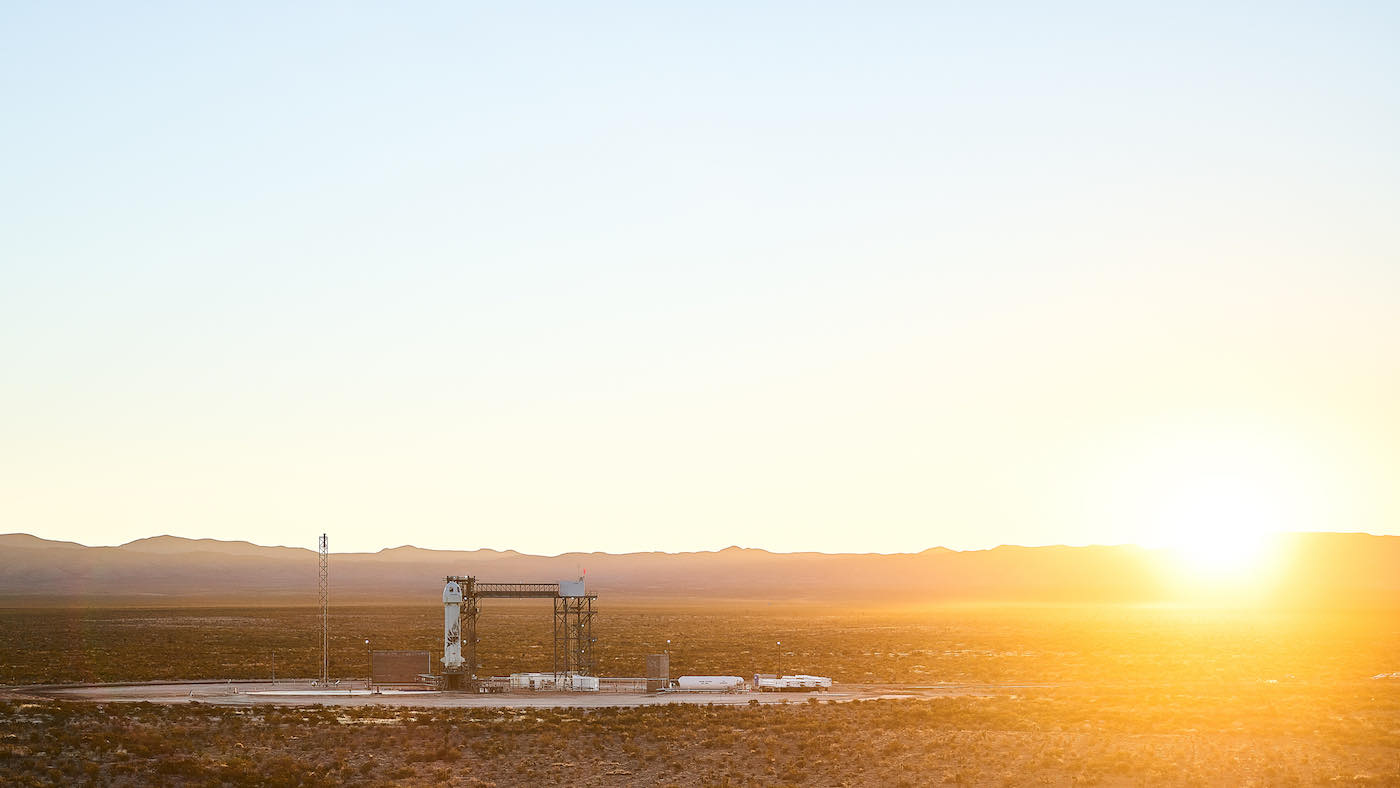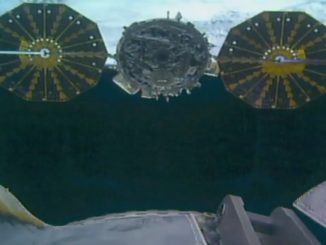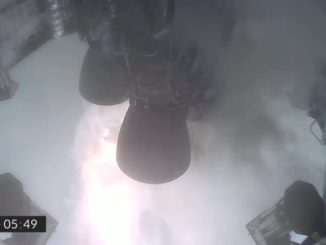
Finally on the cusp of launching people to the edge of space, Blue Origin plans to use a suborbital test flight of its New Shepard booster and crew capsule Wednesday to rehearse boarding and recovery procedures for future missions with paying passengers.
The 60-foot-tall (18-meter), single-stage New Shepard booster is scheduled to blast off at 10:15 a.m. CDT (11:15 a.m. EDT; 1515 GMT) from Blue Origin’s expansive desert launch site north of Van Horn, Texas.
In a pre-launch statement, Blue Origin said the suborbital test flight — designated NS-15 — is a “verification step for the vehicle and operations prior to flying astronauts.”
Blue Origin said its employees will perform “astronaut operational exercises” before and after the test flight Wednesday.
Personnel standing in as New Shepard passengers will board the crew capsule before launch.
“These astronauts will climb the launch tower, get into their seats, buckle their harnesses, and conduct a communications check from their seat with CAPCOM, the Capsule Communicator,” Blue Origin said. “The tower operations team will prepare the capsule cabin for launch and then briefly close the capsule hatch. The astronauts will then exit the capsule prior to launch.”
Blue Origin, a space company founded by Amazon billionaire Jeff Bezos, has launched 14 suborbital New Shepard missions since 2015. All of the launches have been successful, with 14 straight recoveries of the rocket’s capsule section, which contains scientific experiments, payloads, and will eventually carry people.
The privately-developed New Shepard rocket and capsule are designed to fly to an altitude of more than 60 miles, or 100 kilometers, the internationally-recognized boundary of space. After cutoff of the rocket’s single hydrogen-fueled engine, the capsule separates and passengers will be able to unstrap from their seats and float around the cabin.
Without the speed required to enter orbit around Earth, the capsule and its occupants will have a few minutes of weightlessness before falling back into the atmosphere.
The New Shepard booster is designed to deploy an air brake, reignite its BE-3 main engine and extend landing legs for a vertical touchdown back at Blue Origin’s West Texas test site around seven-and-a-half minutes after liftoff. The capsule, meanwhile, will unfurl three parachutes for a landing nearby about 10 minutes after launch.
After the capsule’s landing Wednesday, Blue Origin personnel will get inside the spacecraft again to rehearse procedures to open the hatch and exit the ship after touchdown.
One of the capsule’s six seats Wednesday will be occupied by Mannequin Skywalker, Blue Origin’s flight suit-clad test dummy that has flown on past launches.
Blue Origin’s most recent suborbital mission in January debuted the fourth reusable New Shepard booster, and a new pressurized capsule fitted with seats and other passenger accommodations. At the time, a source said Blue Origin was on pace to begin flying people to the edge of space this year.
Research scientists supporting government and privately-funded experiments, wealthy space tourists, and professional astronauts are among Blue Origin’s target market. The company has already launched NASA-sponsored science experiments.
The new crew capsule is named “RSS First Step,” with RSS standing for Reusable Spaceship. The fully automated spacecraft is outfitted with six seats, crew display panels, and speakers with a microphone and push-to-talk button at each seat, according to Blue Origin.
The push-to-talk button will allow passengers to speak with mission control during a flight. There’s also a crew alert system to give passengers safety messages, and a liner inside the cabin wall provides cushioning for passengers as they float inside, and helps suppress engine noise during launch.
The capsule’s cooling and humidity control loops regulate internal temperatures and keep windows from fogging in flight. The “RSS First Step” also has a carbon dioxide scrubber.
The New Shepard booster is a stepping stone toward Blue Origin’s loftier ambitions of launching cargo and people into Earth orbit, and eventually to more distant destinations in the solar system.
The company’s huge orbital-class New Glenn rocket is scheduled for its debut launch in late 2022 from Cape Canaveral Space Force Station, Florida. Blue Origin announced in February a delay in the New Glenn rocket’s first launch from 2021 until next year.
Blue Origin is also competing with SpaceX and Dynetics to develop a human-rated lunar lander for NASA’s Artemis program, which aims to return astronauts to the moon for the first time since 1972.
Email the author.
Follow Stephen Clark on Twitter: @StephenClark1.



